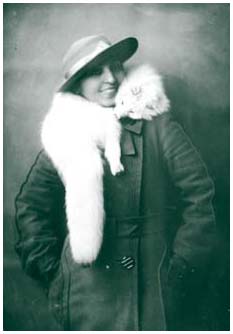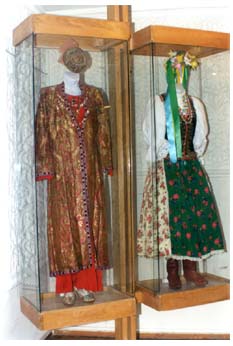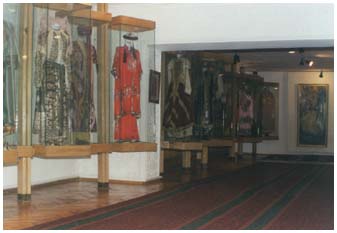
Tamara Khanum is an artistic pseudonym of Tamara Artyemovna Petrosyan.
She was born on March 29, 1906 in the village at the train station Gorchakovo not far from Ferghana in the family of an Armenian, exciled to Turkestan from Baku in 1905 for his revolutionary activities. The girl was fond of dancing since her childhood. In 1919 a popular national comic actor Yusup-kizik began to invite her to participation in the public merry-makings so called sailyas. Soon the young actor moved to Tashkent, participated in the performances of the Russian ballet company and played on tours in Uzbekistan being a member of the concert company of Mukhitdin Kari-Yakubov, a man who later became not only a well-known musician and talented organizer of the theatrical and musical business but a husband of Tamara Khanum.

|

|
In 1923 she graduated from the plastic department of Moscow Theatrical College and two years later being a member of the delegation of the USSR artists she took part in the World Exhibition of the Decorative Art in Paris where she performed folk Uzbek songs and dances.
At the beginning of the 30s on the basis of thorough studying art of dancing and such dances as "Mavrigi", "Rumalim", "Bartavil" in particular, Tamara Khanum created an original women's Khorezm dance "Lyazgi".
In 1935 she participated in the International Festival of Dancing held in London and won a gold medal.

At the end of 30s Tamara Khanum collaborated in creation scenic impersonation and choreography of the Ballet "Gulyandom" and performed the main part in it; she also organized the first ballet school in Tashkent and composed her own original genre "song-dance". She began to appear with her programmes "Song and Dances of the Soviet Union" and then with the "Songs and Dances of the People of the World" one which brought her world glory.
During World War II Tamara Khanum was a member of the front theatrical companies, gave more than 1000 concerts, donated the Stalin Prize she had been awarded to the fund of Defence, presented money for the production of planes and tanks.
In the second part of the 40s and 50s she was on tour. The citizens of Austria, Poland, Chechoslovakia, Mongolia, Indonesia, India, Pakistan, Afganistan, Albania, China and Norway welcomed her with a storm of applause.
Tamara Khanum was awarded the Title of the Peoples's Artist of the USSR and was given high government awards. In the last years of her life she took and active part in social activities. In 1986 she organized a constant "Exhibition of Tamara Khanum's costumes". It was on June 30, 1991 when the prominent actress died.

In the very year on the basis of the exhibition the Home-museum of Tamara Khanum began to function. A rich collection of dancing costumes makes up the main part of the museum. Besides some kinds of Uzbek costumes, the visitors are offered Karakalpak, Ukrainian, Mongolian, Turkish, Russian, Hindu, Korean, Lithuanian, Armenian, Rumanian, Azerbaijan, Albanian, Egypt and other folk dancing costumes. In addition to 28 costumes displayed in the hall 50 more are kept in the stores. Photographs, placards, letters, presents are displayed in the special hall. The memorial flat of the outstanding actress is included into the memorial complex. The General Curator and the Executive Director of the Museum is Mekhriniso Sabirovna Rakhimbaeva.
Main page

|

|